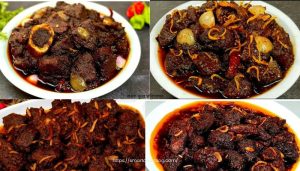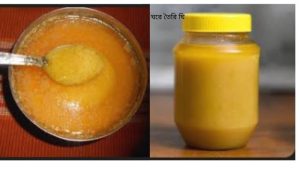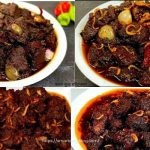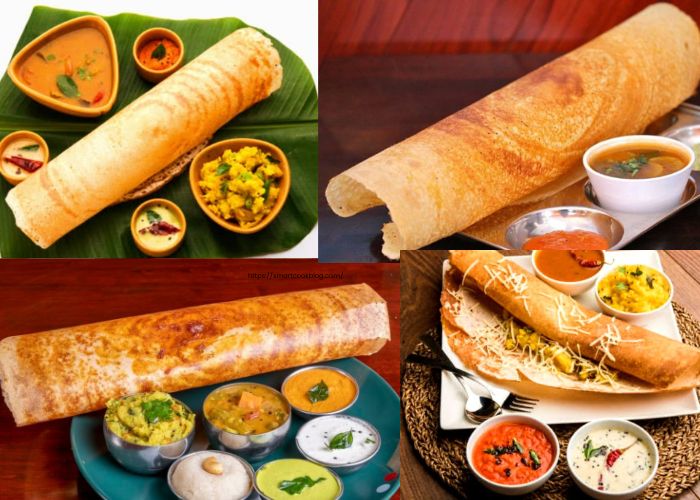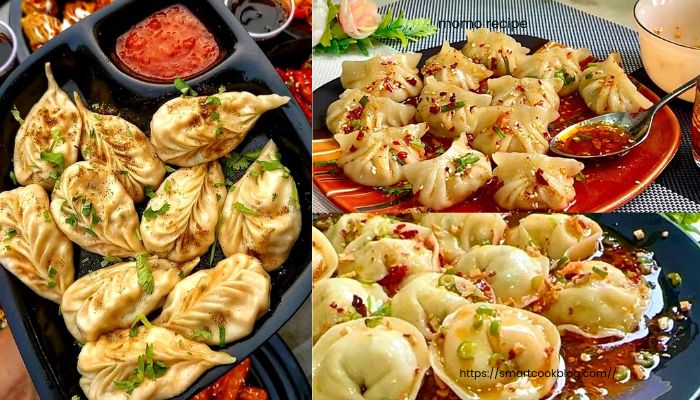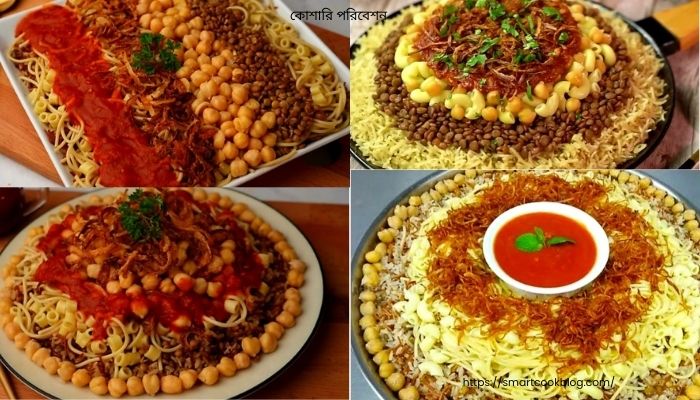Crispy & Nutritious South Indian Dosa Recipe You Can Make at Home
Introduction
South Indian cuisine is known worldwide for its unique flavors, lightness, and health benefits, and one of its most iconic dishes is the dosa. A it is a thin, crispy pancake made primarily from fermented rice and urad dal (black gram). It is not only delicious but also easy to digest and packed with nutrients. Perfect as a breakfast, snack, or even dinner option, dosa has won the hearts of food lovers globally.
If you have ever wondered how to make authentic, healthy, and crispy dosa right in your kitchen, this guide is for you. We will take you through the origins, benefits, detailed recipe, serving ideas, and useful tips to master dosa-making.
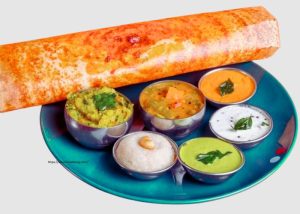
Origin
Dosa originated from the southern states of India, primarily Tamil Nadu and Kerala, centuries ago. Historical records suggest that it has been a staple in Brahmin households as a breakfast item for generations. The traditional preparation involves soaking rice and urad dal separately, grinding them into a batter, fermenting it overnight, and cooking on a hot griddle. Over time, dosa spread across India and gained international popularity due to its versatility and health benefits.
Today, dosa varieties abound, including plain dosa, masala, rava, and more, making it a versatile dish enjoyed across cultures.
Reasons to Try
1. Nutrient-Rich and Healthy
Dosa batter, made from rice and urad dal, is rich in carbohydrates, proteins, and essential nutrients. Fermentation enhances the bioavailability of vitamins, minerals, and probiotics, making dosa good for gut health.
2. Gluten-Free and Low-Fat
Unlike many other bread-like items, dosa is naturally gluten-free and low in fat, making it suitable for those with gluten intolerance or those aiming for a healthier diet.
3. Easy to Digest
The fermentation process breaks down complex starches and proteins, making dosa easy on the stomach and a perfect meal option for people of all ages, including children and the elderly.
4. Versatile Meal Option
Dosa can be eaten plain, stuffed with spiced potatoes, or paired with various chutneys and sambar, fitting different taste preferences and dietary needs.
5. Budget-Friendly and Simple to Make
The ingredients required are affordable and readily available. With a little practice, you can make it quickly at home without needing any fancy equipment.
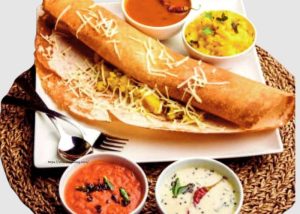
Ingredients & Instructions
Ingredients
-
1 cup parboiled rice (idli rice preferred)
-
½ cup urad dal (split black gram without skin)
-
1 tablespoon fenugreek seeds (optional, for fermentation and flavor)
-
Salt to taste
-
Water as required
-
Oil or ghee for cooking
Instructions
Step 1: Soak the Ingredients
Rinse the rice and urad dal separately until the water runs clear. Soak the rice and fenugreek seeds in one bowl and the urad dal in another bowl for 5 to 6 hours or overnight. Soaking softens them and helps in fermentation.
Step 2: Grind the Batter
First, grind the urad dal with a little water to a smooth and fluffy paste. Then grind the rice to a slightly coarse texture. Mix both batters in a large bowl, add salt, and stir well.
Step 3: Ferment the Batter
Cover the bowl and let the batter ferment for 8 to 12 hours or overnight in a warm place. The batter should rise and become bubbly, indicating good fermentation.
Step 4: Prepare the Dosa
Heat a non-stick or cast-iron griddle (tawa) until hot. Pour a ladleful of batter onto the tawa, and using the back of the ladle, spread the batter thinly in a circular motion. Drizzle a little oil or ghee around the edges.
Step 5: Cook and Serve
Cook until the edges turn golden brown and crisp, then flip (optional) or fold the dosa. Serve hot with chutney and sambar.
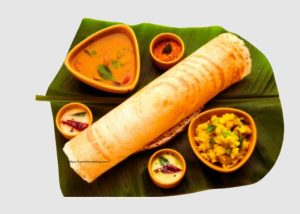
Serving Ideas
-
Classic Combination: Serve it with coconut chutney and sambar for an authentic experience.
-
Masala : Add a spiced potato filling inside to make a flavorful masala dosa.
-
Variety of Chutneys: Try tomato, coriander, mint, or peanut chutney for different flavors.
-
Healthy Sides: Pair with vegetable upma or salad for a balanced meal.
-
Breakfast or Dinner: It is versatile enough to be enjoyed any time of the day.
Uses
-
Breakfast: A wholesome and energy-packed start to your day.
-
Snack: Crispy dosa makes a perfect light snack with tea or coffee.
-
Lunchbox: Easy to pack and nutritious for kids’ or adults’ lunch.
-
Special Occasions: Serve to guests or during festivals as a popular delicacy.
FAQ
Q: What if the batter doesn’t ferment?
A: Make sure the batter is kept in a warm spot, especially during colder months. Adding a pinch of sugar or fenugreek seeds can help the fermentation process.
Q: How long can I store batter?
A: Batter can be refrigerated for up to 3–4 days. Always stir well before use.
Q: Can I make it without fermentation?
A: Yes, but fermented dosa has a better texture, taste, and nutritional value.
Q: How to prevent dosa from sticking to the pan?
A: Use a well-seasoned cast-iron tawa or non-stick pan and rub it with oil before pouring batter.
Tips
-
Use a 2:1 ratio of rice to urad dal for the best texture.
-
Soaking fenugreek seeds improves fermentation and flavor.
-
Grinding batter in small batches helps achieve the right consistency.
-
Spread the batter thin for a crisp dosa; thicker spread results in soft dosa.
-
Cook dosa on medium-high heat for even browning and crispiness.
-
Use an onion slice dipped in oil to rub the pan for non-stick cooking on cast iron.
Conclusion
It is not just a traditional South Indian dish; it’s a wholesome and versatile meal option that combines taste, nutrition, and ease of preparation. Whether you are a beginner or a seasoned cook, mastering the art of dosa will add a delicious and healthy option to your kitchen repertoire.
Enjoy the crispy, golden goodness with your favorite chutneys and sambar, and experience the taste of South India right at home. Give this recipe a try today, and you might find yourself making dosa regularly for your family and friends!
“Thanks for Reading”






